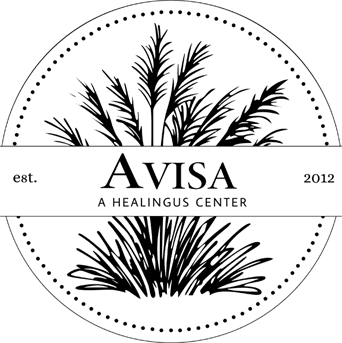EMDR
Home / EMDR

EMDR Therapy
Have you ever had a hard time dealing with painful memories or feelings? Fortunately, there is a new form of therapy that can help you recover from traumatic experiences and achieve inner peace.
EMDR is a non-conventional psychotherapy technique that helps you recover from stressful life experiences in a short amount of time.
Developed to treat PTSD, EMDR can also be used to treat addiction, anxiety and depression.
Avisa Recovery Programs
ADDICTION TREATMENT THAT ISN’T COOKIE-CUTTER
One of the first steps when seeking treatment for substance abuse is the detoxification process. Here you are medically supervised and managed through withdrawal process to rid the body of drugs & alcohol.
Residential inpatient treatment is when a client lives on-site 24 hours a day, 7 days a week while receiving intensive inpatient treatment. Learn more about inpatient treatment and how it can help you on your journey.
The partial day program at Avisa Recovery combines the best of aspects inpatient and outpatient treatment to form a hybrid program that allows you to experience inpatient therapies on an outpatient basis.
Find out why the innovative intensive outpatient program at Avisa Recovery is your best choice when seeking an outpatient addiction treatment program in Ocean County, New Jersey.
Our outpatient program will enable your professional life to become limitless. We offer the tools for you to become the best you can be while being sober! If you’re in Ocean County, don’t wait another day to start your recovery.
The family program at Avisa Recovery is an integral part of our programming. Family therapy is an essential part of the recovery process because it allows members of the entire family system to learn how to recover as a unit while supporting their loved-one in recovery.
Let Us Help You Overcome Addiction
Request a Confidential Callback Now
What Is EMDR Therapy?
Electro-Magnetic Resonance Drilling (EMDR) is a technique used in psychotherapy that helps to modulate the brain’s response to traumatic or stressful events. In EMDR, participants recall traumatic events as their therapist directs their eye movement (or uses alternative techniques such as taps) to help the brain process the event in a new and less painful manner.
EMDR combines cognitive behavioral therapy (CBT) techniques with eye movement or other left-right rhythmic stimulation to open brain pathways and aid in healing.
In EMDR, the aim is to fully integrate the experiences that cause the issues, and to incorporate new experiences that are necessary for normal functioning.
Get Approved. Get Help.
We Work With Most Major Insurance Providers
- Aetna
- Amerihealth
- Anthem
- Beacon
- Behavioral Health Systems
- BCBS—Most BlueCross & BlueShield Plans
- Carelon Behavioral Health
- CareFirst
- Cigna
- ComPsych
- Coventry
- Empire BlueCross BlueShield
- GHI
- Highmark
- Humana
- Magellan
- MagnaCare
- Meritain Health
- MultPlan
- NYSHIP (New York State Insurance Plan)
- Optum
- Oxford
- PHCS
- Self-Pay
- TRICARE
- UHC
- UMR
- VA Insurance
- 90 Degree Benefits
At this time, we do not accept Medicaid or Medicare
Benefits of EMDR
- Reduced Symptoms and Distress
- Healthier Beliefs and Coping Skills
- Improved relationships
- Lasting Change
Areas where EMDR is used
- PTSD and trauma
- Addiction
- Anxiety and panic disorders
- Depression
- Self-esteem issues
How EMDR Works to Treat Trauma and Addiction
The brain’s information processing system is stimulated by eye movement, sound or tapping. This allows the brain to release blocked traumatic memories and process them in a healthy manner.
When addictive behaviors or substances form, the brain uses them to cope with stress and trauma. EMDR helps to recognize these underlying triggers and reframe negative thought patterns and beliefs. By reinterpreting the traumatic experiences that create the addictive behaviors or substances, EMDR helps to remove the triggers and cravings associated with addiction.
EMDR involves moving your eyes from side to side while remembering traumatic events. Your eyes follow the therapist’s fingers or light. This allows your brain to access and repurpose the trauma memory.
The eye movement also triggers the brain to form new neural pathways. Over time, these traumatic memories become less powerful and negative thoughts change to more positive and healthy ones.
The 8 Phases of EMDR Treatment
- During the first phase of your EMDR treatment, your therapist will assess if EMDR is the right choice for you and help you get ready for the second phase.
- During Phase two, you will choose a particular traumatic memory to focus on, such as an event in your past that is particularly painful or stressful. Your therapist will work with you to identify what negative beliefs you have about yourself in connection with this memory.
- Phase three is when you desensitize yourself to the traumatic memory using bilateral stimulation, such as eye movement, tapping, or tone. This process helps to open up the memory to allow you to process the surrounding emotions.
- During Phase four, your therapist will work with you to focus on your memory and how it relates to your body, feelings, and how you feel about yourself. Through this process, your therapist will help you work through the challenging emotions.
- Phase five is the installation of positive affirmations and affirmations to replace the ones you found negative in phase 2. You will repeat this bilateral stimulation to reinforce these positive affirmations.
- Phase six will take you back to your original traumatic memory to see if it’s no longer stressful. If it’s still causing intense emotions, you’ll go through the process again.
- Phase seven is designed to support the continuation of treatment. During this phase, you’ll talk about any connections or insights you’ve made between the focused memory and your addictions or mental health conditions.
- At the end of Phase eight, it’s time to reassess your treatment plan and plan for the future.
EMDR for PTSD and Other Mental Health Conditions
- Addiction
- Depression and anxiety
- Eating disorders
- Chronic pain
Does EMDR Really Work? The Research on Effectiveness
The effectiveness of EMDR has been extensively studied in clinical trials. More than 100 randomised, controlled trials have demonstrated that EMDR is effective in treating PTSD, anxiety and depression, among other conditions.
EMDR is a proven treatment for PTSD. According to the American Psychiatric Association (APA), the International Society of Traumatic Stress Studies (ISSTS), and the U.S. Department of Veterans Affairs (DoVAD), at least 80 percent of people experience significant relief from PTSD symptoms after 3 to 6 EMDR sessions.
Emotional and behavioral recovery (EMDR) is the process of breaking down negative patterns of emotion, thought, and body sensations that are associated with traumatic experiences, and then breaking them down into more positive, wholesome associations.






